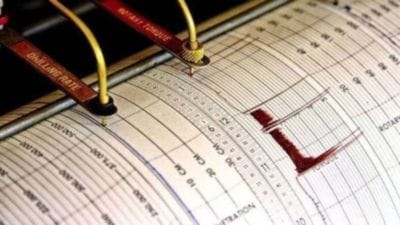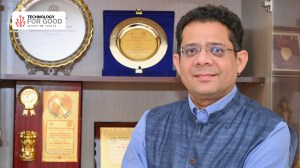Budget 1997 and the disappearing art of political risk-taking
Recent Budgets have been cautious, and the one Arun Jaitley presented this week probably represents the complete disappearance of risk-taking.
In June 1996, in the days after the fall of Atal Bihari Vajpayee’s 13-day government, some non-Congress, non-BJP parties were trying to form an alternative. At the centre of the negotiations was G K Moopanar, a veteran Congressman who had walked out of the party that year to protest its decision to tie up with Jayalalithaa, who was then facing corruption charges. The new party floated by Moopanar and his followers, the Tamil Maanila Congress, had won 20 seats in the 1996 elections. Moopanar and P Chidambaram, who too had left the Congress, were part of several key political meetings which finally led to the Janata Dal leader from Karnataka, H D Deve Gowda, becoming Prime Minister in the United Front government.
Deve Gowda, who was new to the politics of Delhi, put Chidambaram in charge of Finance — perhaps because he was seen as part of the reform group in the previous Narasimha Rao government. Chidambaram, then Minister of State with Independent Charge of Commerce, had pushed a new trade policy in 1991. As Finance Minister, it was possibly apparent to him and to many others that Gowda’s coalition government, backed from the outside by the Congress, wouldn’t survive long — prompting Chidambaram to look at some of the unfinished business from the 1991-96 burst of economic reforms.
Ahead of Chidambaram’s second Budget in February 1997, the Budget Group in the Ministry, headed by the Minister, debated the merits and downsides of lowering tax rates. Rates of both personal and corporate tax were high those days — with slabs of 15%, 30% and 40% — while the peak rate for Customs duty was 50%, way higher than many countries in the region. The debate in the Ministry was over the famous Laffer Curve: economist Arthur Laffer’s theory that high tax rates discourage investment and lead to revenue losses for the government. Some of Chidambaram’s officials were sceptical, and worried about the implications of the hit on revenues — and over what would be the golden point for the curve to work.
[related-post]
The challenge for the team was whether to settle for a modest change, or to boldly cut rates sharply. The Finance Minister was convinced that the Laffer Curve theory would work not in the near term, and at least not in the first year, but down the line — and if India was to move towards a more market-oriented economy, this was the way to go. But as in all Budgets, the Prime Minister had to go along with the decision. It helped that given Gowda’s background, his focus was on the rural and farm sectors (he described himself as a “humble farmer”) with very little interest in economic issues. That’s what most Finance Ministers like — to be left alone to work on a Budget, with minimum interference from the PMO or elsewhere.
The Finance Minister’s Budget Group, which included Finance Secretary Montek Singh Ahluwalia and Revenue Secretary N K Singh, went with two sets of rates to the Prime Minister, and also to get the Budget speech approved. The story goes that Gowda spoke very little at the meeting, but subsequently famously told the Minister and his officials, “Let’s do it. Don’t (be) afraid!”
That was how Chidambaram, in his February 27, 1997 Budget, cut income tax rates to 10%, 20%, and 30% in three slabs, peak Customs duty to 40%, corporate surcharge to zero, and lowered the rates for both domestic and foreign companies. The Budget saw higher foreign investment of up to 30% in Indian companies for portfolio investors, replacement of FERA with FEMA, the first signalling of a move towards capital account convertibility, and a Voluntary Disclosure of Income Scheme or VDIS, which was hugely successful in helping the government mobilise close to Rs 11,000 crore, on the back of an aggressive marketing campaign led by Revenue Secretary N K Singh. Interestingly, a good part of the proceeds came from Gujarat. That scheme too was much criticised, but the government managed to push it through, citing the recommendation of the National Development Council and the views of West Bengal Chief Minister Jyoti Basu to share a substantial part of the proceeds (77.5% finally) with the states.
The Budget also signalled a huge political risk taken by a coalition government. The euphoria was to wane swiftly, and the Deve Gowda government fell at the end of March after the Congress pulled the plug. By April 20, when another surprise candidate, I K Gujral, was chosen Prime Minister, a miffed Moopanar and his party decided not to join the government, and provide outside support. The Finance Bill was yet to be approved by Parliament, and for a fortnight or so — from the third week of April to the first week of May — Gujral retained the Finance portfolio, perhaps hoping to have the Tamil Maanila Congress back in the government.
During the debate on the Budget, Chidambaram, who was by that time no longer the Finance Minister, spoke on behalf of the Treasury Benches, finishing with an appeal to the House to pass the “Dream Budget”, perhaps unique in the history of the Budget process. Early in May, the Tamil Maanila Congress was back, and Chidambaram moved the Finance Bill on May 7, offering minor sops and getting the Budget passed.It is fascinating to look back at how minority governments in the past have been far more willing to take political and economic risks on issues of economic reforms. Chidambaram’s 1997-98 Budget, along with Yashwant Sinha’s 2000-01 and of course, Manmohan Singh’s 1991-92 Budget, truly broke new ground. Recent Budgets have been cautious, and the one Arun Jaitley presented this week probably represents the complete disappearance of risk-taking.
Photos



- 01
- 02
- 03
- 04
- 05



































